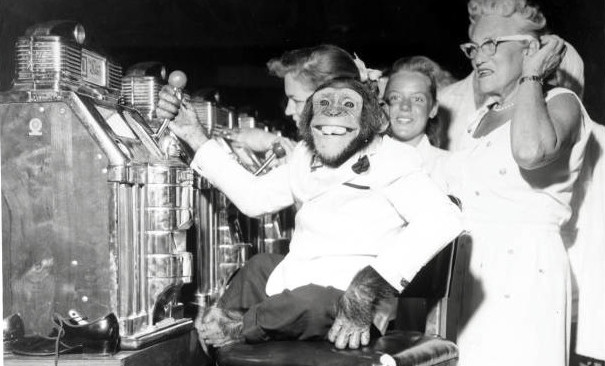Some among us pull out our smartphones a little too desperately, as if chain smokers nervously grasping for the next cigarette. That’s not surprising since both are highly addictive.
Undoubtedly, these devices possess a bounty of wealth, a portable storehouse of knowledge unmatched in human history, but what keeps many coming back are far pettier rewards, likes and swipes and such that are aimed at feeding egos. Some of these incentives are accidental and others purposely designed, with the sum being an endless supply of lottery tickets in our pockets that simply must be checked.
An excerpt from Tristan Harris’ smart Spiegel essay on smartphone addiction:
Here’s the unfortunate truth: Several billion people have a slot machine in their pocket.
When we pull our phone out of our pocket, we’re playing a slot machine to see what notifications we have received. When we swipe down our finger to scroll the Instagram feed, we’re playing a slot machine to see what photo comes next. When we “Pull to Refresh” our email, we’re playing a slot machine to see what email we got. When we swipe faces on dating apps like Tinder, we’re playing a slot machine to see if we got a match.
Sometimes this is intentional: Apps and websites sprinkle intermittent variable rewards all over their products because it’s good for business. Other times, for example with email or smartphones, it’s an accident.
Another way technology hijacks our minds is by inducing the 1 percent chance we could be missing something important. But Apps also exploit our need for social approval. When we see the notification “Your friend Marc tagged you in a photo” we instantly feel our social approval and sense of belonging on the line. But it’s all in the hands of tech companies.
Facebook, Instagram or SnapChat can manipulate how often people get tagged in photos by automatically suggesting all the faces we should tag. So when my friend tags me, he’s actually responding to Facebook’s suggestion, not making an independent choice. But through design choices like this, Facebook controls the multiplier for how often millions of people experience their social approval.
The same happens when we change our main profile photo. Facebook knows that’s a moment when we’re vulnerable to social approval: “What do my friends think of my new pic?” Facebook can rank this higher in the news feed, so it sticks around for longer and more friends will like or comment on it. Each time they like or comment on it, we get pulled right back in.
Everyone innately responds to social approval, but some demographics, in particular teenagers, are more vulnerable to it than others. That’s why it’s so important to recognize how powerful designers are when they exploit this vulnerability.•
Tags: Tristan Harris

